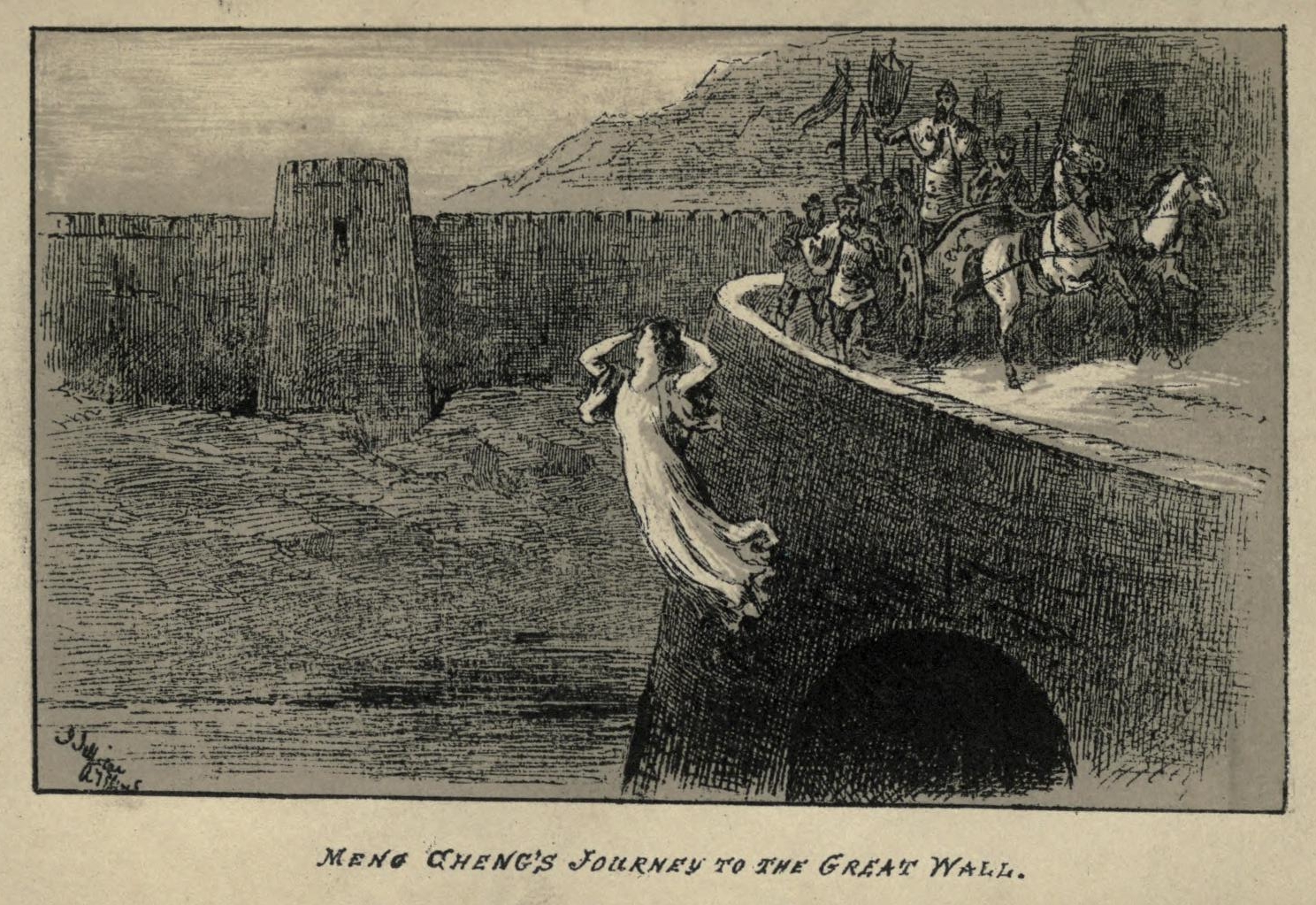This week I did a lot of reading–my last blog post and the insightful annotations by my classmates, the written works that I used to generate my thoughts, and my peers’ posts and their references.
I learned a couple major points from a week’s worth of research. One element is that in order to understand the history of a physical, historical landmark, evidence from that time period is necessary, including both factual documentation and fictional legends, because it gives an account of life, values, and thoughts at that time. Knowledge of the origins of stories, in particular, can be a starting point for discussing the cultural value bestowed upon an object, or in this case, a landmark, can change over time.
I dived into W.L. Idema’s two versions, titled Mobilizing the Gods and Forbidden Desires. I found it fascinating that the legends about Lady Meng Jiangnü were vastly different in plot, yet the result at the end insinuated that the Great Wall has yet to be built or cannot be built. Why is that? Are these legends significant pieces of evidence that support the idea that the Great Wall was not fully made in the Qin Dynasty?
Things I Learned this Week
- Despite my newfound knowledge that the known history of the Great Wall is not completely true, the structure itself is still very important.
- Legends that may be unbelievable and/or include supernatural components still contribute meaningful insights into learning and understanding history; they bring awareness to the behind-the-scenes aspects of history that may not be revealed in documentation.
- Upon initial glance, the Great Wall is amazing, but there is a striking gratitude in being enlightened on the hows and whys of its creation.
Bibliographic References
Idema, W. L. Meng Jiangnü Brings Down the Great Wall: Ten Versions of a Chinese Legend. A China Program Book. Seattle: University of Washington Press, 2008.
